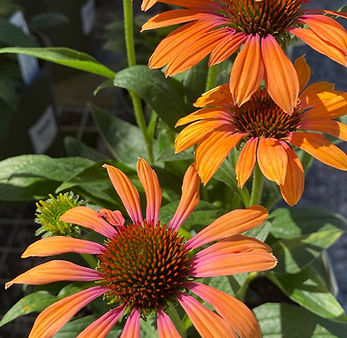THE PLANT OF THE MONTH
Available Monthly Starting in April
Discover a new featured plant at the nursery each month! Selected to highlight seasonal blooms and provide standout accents for your garden. Ask a staff member where to find it and try something new!
April: Primula (Primrose)
Zone: 5-7 Height: 6-12" Spread: 1.5-2.5'
These early spring bloomers prefer light shade and rich, well-drained soil full of humus. Available in a wide range of colors, primroses multiply each year and some may even re-bloom in the fall. Prune off dead leaves, spent blooms and water thoroughly during the summer months.

May: Myosotis sylvatica
(Forget-Me-Nots)
Zone: 3-8 Height: 6-12" Spread: 1-1.5'
These late-spring, bright blue, enthusiastic bloomers have re-seeding down to a science and naturalize easily. They thrive in moist soil, can be used as ground covers, and look very well mixed with tulips. Forget-me-nots will grow happily in full sun to part shade and are not usually bothered by deer or rabbits.

June: Hardy Geranium
(Cranesbill)
Zone: 5-8 Height: 6-12" Spread: 1-2'
These colorful, mounding, hardy plants bloom from mid-spring to fall and are the perfect “tuck-in” plant. They prefer well-drained soil and do best in morning sun with some afternoon shade; some cultivars become flowering groundcovers or tuck-ins in rock gardens. Extremely versatile, many do well at the front of the border, in dry shade under trees or in rose borders. A slow-release fertilizer used at the start of the summer will see these plants through the growing season; once wildflowers, they don’t expect much coddling.

July: Echinacea
(Coneflower)
Zone: 3-9 Height: 24-48" Spread: 24-36"
These hardy prairie plants are long-blooming and drought tolerant and feature a wide range of colors including white, pink and purple. Planted in full sun, they will bloom from mid-summer to fall and appreciate dead-heading. They will self-seed; large clumps should be divided every three years. Deer-resistant, they attract birds and butterflies. Some gardeners leave the plants standing through the winter and then shear them back in the spring to make bushier plants.

August: Vernonia
(Ironweed)
Zone: 5-9 Height: 4-6' Spread: 3-4'
This tall (4’+) perennial thrives as a background plant, standing straight and showcasing its purple flowers from late summer to the killing frosts. Vernonia is fond of damp locations and is often seen growing wild along the banks of marshes. Sun-loving, it is attractive to butterflies and hummingbirds. Heat and humidity tolerant, Vernonia is at its best planted in drifts to display its remarkable purple flowers.

September: Physostegia
(Obedient Plant)
Zone: 3-9 Height: 24-48" Spread: 24-36"
These rosy-pink or pale purple tubular flowers, resembling both snapdragons and foxgloves, grow best in well-drained soil and full sun. They flower from the base of the stem up and combine well with blue lobelias. Deer resistant, hummingbirds and butterflies are constant companions. If bent gently into a new position, the plant will stay put for a short time … hence its name!

